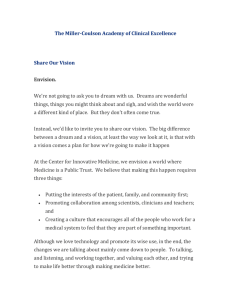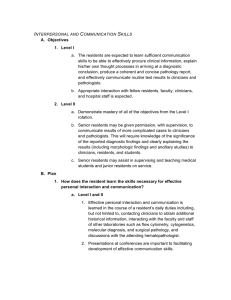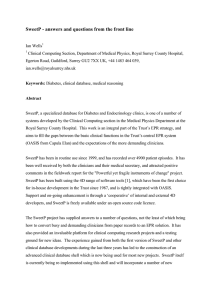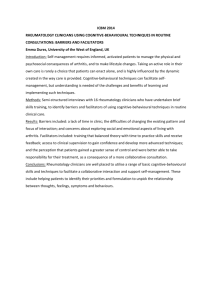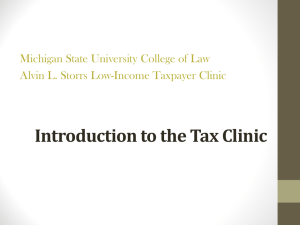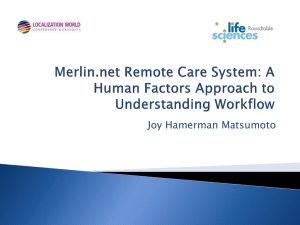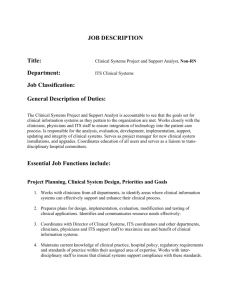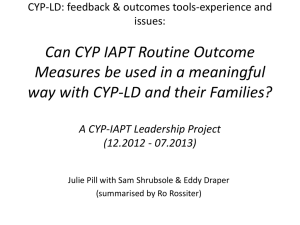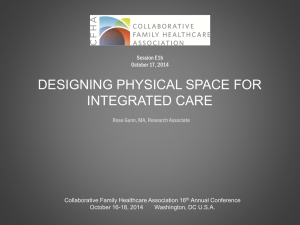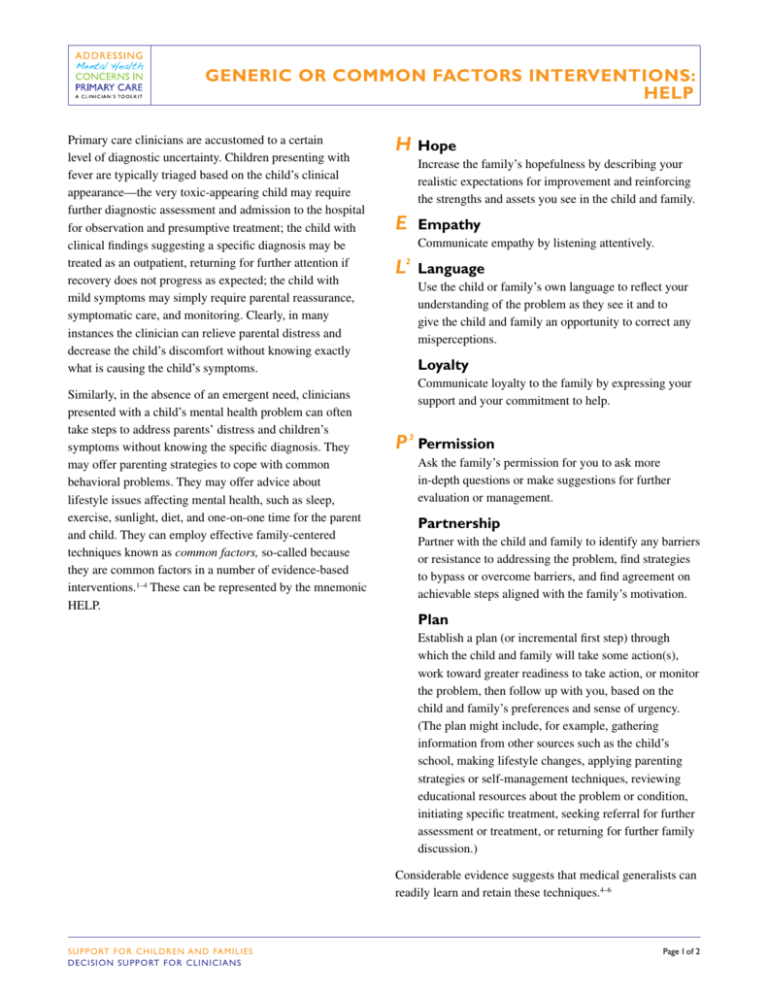
GENERIC OR COMMON FACTORS INTERVENTIONS:
HELP
Primary care clinicians are accustomed to a certain
level of diagnostic uncertainty. Children presenting with
fever are typically triaged based on the child’s clinical
appearance—the very toxic-appearing child may require
further diagnostic assessment and admission to the hospital
for observation and presumptive treatment; the child with
clinical findings suggesting a specific diagnosis may be
treated as an outpatient, returning for further attention if
recovery does not progress as expected; the child with
mild symptoms may simply require parental reassurance,
symptomatic care, and monitoring. Clearly, in many
instances the clinician can relieve parental distress and
decrease the child’s discomfort without knowing exactly
what is causing the child’s symptoms.
Similarly, in the absence of an emergent need, clinicians
presented with a child’s mental health problem can often
take steps to address parents’ distress and children’s
symptoms without knowing the specific diagnosis. They
may offer parenting strategies to cope with common
behavioral problems. They may offer advice about
lifestyle issues affecting mental health, such as sleep,
exercise, sunlight, diet, and one-on-one time for the parent
and child. They can employ effective family-centered
techniques known as common factors, so-called because
they are common factors in a number of evidence-based
interventions.1–4 These can be represented by the mnemonic
HELP.
HHope
Increase the family’s hopefulness by describing your
realistic expectations for improvement and reinforcing
the strengths and assets you see in the child and family.
EEmpathy
Communicate empathy by listening attentively.
L Language
2
Use the child or family’s own language to reflect your
understanding of the problem as they see it and to
give the child and family an opportunity to correct any
misperceptions.
Loyalty
Communicate loyalty to the family by expressing your
support and your commitment to help.
P 3Permission
Ask the family’s permission for you to ask more
in-depth questions or make suggestions for further
evaluation or management.
Partnership
Partner with the child and family to identify any barriers
or resistance to addressing the problem, find strategies
to bypass or overcome barriers, and find agreement on
achievable steps aligned with the family’s motivation.
Plan
Establish a plan (or incremental first step) through
which the child and family will take some action(s),
work toward greater readiness to take action, or monitor
the problem, then follow up with you, based on the
child and family’s preferences and sense of urgency.
(The plan might include, for example, gathering
information from other sources such as the child’s
school, making lifestyle changes, applying parenting
strategies or self-management techniques, reviewing
educational resources about the problem or condition,
initiating specific treatment, seeking referral for further
assessment or treatment, or returning for further family
discussion.)
Considerable evidence suggests that medical generalists can
readily learn and retain these techniques.4–6
S U P P O RT F O R C H I L DREN AND FAMILIES
D E C I S I O N S U P P O RT FOR CLINICIANS
Page 1 of 2
GENERIC OR COMMON FACTORS INTERVENTIONS: HELP
Notes
Use of multiple, brief visits (in contrast with the 45- to
60-minute visits common in mental health specialty
practice) will often be necessary to address a child’s mental
health concerns in a busy primary care practice. Experienced
primary care clinicians can readily acquire skills in bringing
a visit to an efficient close and increasing the likelihood that
youth and families will continue in care.4
Studies in adult primary care suggest that applying common
factors skills such as those represented by the HELP
mnemonic can improve patient outcomes without increasing
the length of visits.7
References
1. Grencavage LM, Norcross JC. Where are the commonalities
among the therapeutic common factors? Prof Psychol Res
Pr. 1990;21(5):372–378
2. Bickman L. A common factors approach to improving
mental health services. Ment Health Serv Res. 2005;7(1):
1–4
4. Wissow LS, Gadomski A, Roter D, et al. Improving
child and parent mental health in primary care: a clusterrandomized trial of communication skills training.
Pediatrics. 2008;121(2):266–275
5. Finset A, Ekeberg O, Eide H, Aspegren K. Long term
benefits of communication skills training for cancer doctors.
Psychooncology. 2003;12(7):686–693
6. Fallowfield L, Jenkins V, Farewell V, Solis-Trapala I.
Enduring impact of communication skills training: results of
a 12-month follow-up. Br J Cancer. 2003;89(8):1445–1449
7. Roter DL, Hall JA, Kern DE, Barker LR, Cole KA, Roca
RP. Improving physicians’ interviewing skills and reducing
patients’ emotional distress. A randomized clinical trial.
Arch Intern Med. 1995;155(17):1877–1884
Online Course
An online course on communication skills is available
through Northwest AHEC (http://tinyurl.com/Enhancing
MentalHealth).
3. Castonguay LG, Beutler LE. Principles of therapeutic
change: a task force on participants, relationships, and
techniques factors. J Clin Psychol. 2006;62(6):631–638
The recommendations in this publication do not indicate an exclusive course of treatment or serve as a standard
of medical care. Variations, taking into account individual circumstances, may be appropriate. Original document
included as part of Addressing Mental Health Concerns in Primary Care: A Clinician’s Toolkit. Copyright © 2010
American Academy of Pediatrics. All Rights Reserved. The American Academy of Pediatrics does not review or
endorse any modifications made to this document and in no event shall the AAP be liable for any such changes.
S U P P O RT F O R C H I L DREN AND FAMILIES
D E C I S I O N S U P P O RT FOR CLINICIANS
Page 2 of 2


